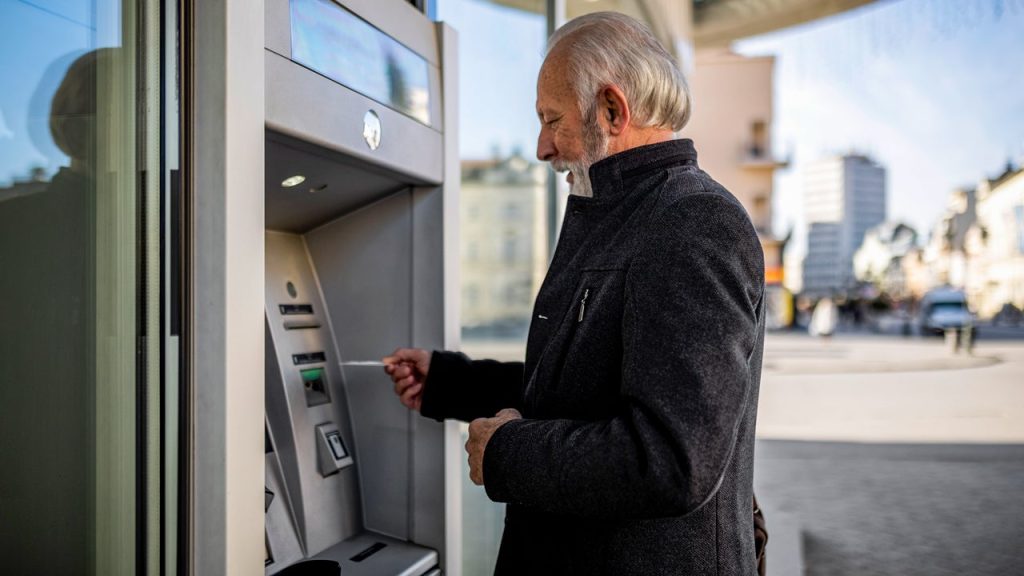In football, getting called for a penalty can result in lost yardage. But when it comes to banking, being charged a penalty can be costly for your hard-earned money. That’s why it pays to steer clear of triggering them.
Common penalties such as overdraft and nonsufficient funds (NSF) fees are pricey. Even as some banks have recently been reducing overdraft fees, the average overdraft fee across checking accounts was $27.08 in 2024, up from $26.61 in 2023, according to Bankrate’s checking and ATM fee survey.
Knowing the most common penalties and fees on banking products, and how you can avoid them, can help you save cash.
1. Early withdrawal penalties on CDs
Certificates of deposit (CDs) typically charge an early withdrawal penalty if you close them, or take money out, before the specific term ends. Early withdrawal penalties are costly and can reduce your gains or even cut into your principal in some cases. Some banks don’t allow partial withdrawals, so that all-or-nothing mentality needs to be a part of your planning process.
An early withdrawal penalty on a five-year CD may range from 150 days to 540 days. But these penalties may vary.
How to avoid this fee: Determining when you’ll need your money before opting for a term is the best way to avoid early withdrawal penalties. Also, knowing the purpose of the funds is critical to avoid this penalty. Put a portion of the money into a high-yield savings account or money market account if you think you might need some of it during the CDs term. Also, you may want to consider a no-penalty CD.
“Just really think ahead. A one-year CD is probably not the best option if you’re currently looking to buy a house. If you’re concerned that you might spend that money and that’s why you want to put it in a CD, put it in a savings account at a different institution than your regular checking account — just to make it a little bit harder for you to get to.”
— Pam HorackCertified Financial Planner at Pathfinder Planning
2. Early closeout fees on accounts
CDs aren’t the only banking products that charge a fee if you close them too soon. At some banks, closing an account too soon will cost you. Banks with this fee usually assess it if you close the account in the first 90-180 days. Early account closure fees typically run between $5 and $50.
How to avoid this fee: Research whether your account has one of these fees. Know that you’ll need to keep one of these accounts open for the required time to avoid the fee. Keep this, and the minimum balance, in mind before opening the account.
In reality, if you plan to close an account this quickly, it might not be the right time to apply or the right fit for you.
3. Maintenance fees
Some banks charge a maintenance (or monthly) fee if you go below a certain balance in your account. Banks may charge these fees to encourage deposits or certain balances. This helps banks guarantee you’ll either have a certain amount in your account or you’ll be paying a fee.
Maintenance fees usually range from a few dollars to $25. The average checking account maintenance fee on interest-bearing accounts is $15.45, while the average for noninterest accounts is $5.47, both marking an increase from the previous year, according to Bankrate’s 2024 checking and ATM survey found.
Banks that have these fees usually waive them if you maintain your balance above a specified amount or have a direct deposit set up. Making a certain number of transactions, or being a student, may also waive the fee at some banks.
How to avoid this fee: Check the fine print and choose either a bank with no monthly fees or one with requirements to avoid the fees that you’re able to meet. Be strategic about your banking choices. Use your direct deposit to help waive fees in one account. For other accounts, look for banks with either no minimum balance requirement or a low one.
Online banks — banks that don’t have branches — usually don’t charge these fees, so these types of banks should be included in your search.
4. Overdraft fees
When you spend more than you have in an account, this results in an overdraft, or a negative balance. An overdraft fee can be charged when the bank covers such a transaction that would otherwise overdraw your account.
For example, the bank may charge an overdraft fee if you write a check for more money than is available in your checking account — and it allows the check to clear. Another transaction that could trigger an overdraft fee is if you make a debit card purchase that overdraws your account. The bank may cover the difference and charge you an overdraft fee.
The average overdraft fee is $27.08, Bankrate’s 2024 checking and ATM fee survey found.
Making purchases with a credit card, instead of a debit card, can be a way to avoid overdraft fees. But you’ll need to pay off your balance every month in order to avoid paying interest, says Ashley Coake, a certified financial planner at Cultivate Financial Planning in Radford, Virginia.
How to avoid this fee: Know your checking account balance before using your debit card or writing a check.
Using a credit card for purchases will also avoid overdrafts. It buys you some extra time, since you don’t have to pay for these purchases until your statement payment is due. But make sure you pay the full balance then, otherwise high annual percentage rates (APRs) could be more expensive than overdrafts over time.
Alternatively, find a bank that has eliminated its overdraft fees. Some banks that have eliminated or significantly reduced their overdraft fees include Capital One and Citibank.
Savings overdraft protection may have no transfer fee in some cases. Or it could have a lower fee than standard overdraft fees. Savings overdraft protection is when your savings backs up your checking account.
5. Sustained overdraft fees
Some banks may charge a sustained overdraft or extended overdraft fee if you have a negative balance for too long. In some cases, you might not have the money so it’s just adding to the problem. However, if you have the money in another account, make sure you transfer it over quickly to avoid this fee.
How to avoid this fee: Monitor your accounts, and set up alerts. Being aware of your balances and budgeting can help make sure you have cash on hand for these circumstances.
Using a credit card for purchases during this time, and using cash to make your account positive quickly, can buy you some time until the statement balance is due. Make sure to pay the credit card debt back to avoid being charged interest.
6. Insufficient funds fees
Also known as insufficient funds fees, nonsufficient funds (NSF) fees are charged when you don’t have enough money in a checking account to pay for a transaction. NSF fees differ from overdrafts in that you don’t end up with a negative balance — rather, the transaction is simply declined.
While there was a decrease within the last year, NSF fees can be lofty — $17.72 on average, according to Bankrate’s 2024 checking account survey. Only 6 percent of banks don’t charge either an overdraft or NSF fee.
How to avoid this fee: As with avoiding an overdraft fee, it’s important to regularly check your account balance, especially before making a large purchase. Consider setting up low balance alerts if you use a mobile banking app. It’s also important to remember any automatic payments that are made from your account and know when these are deducted.
Many banks that don’t charge overdraft fees also don’t charge NSF fees. You could consider switching accounts to eliminate the possibility of getting this fee altogether.
7. Excessive withdrawal fees
Savings accounts and money market accounts are often limited to six withdrawals per month. This limitation exists because of a former federal regulation, Regulation D, which enforced banks to cap withdrawals from nontransaction accounts. The regulation has been removed, but most banks have kept the savings and money market account limitation in place.
Many banks will penalize you by charging you an excessive withdrawal fee if you exceed that limit. Some may close the account or move it to a noninterest-bearing account.
Excessive withdrawal fees often range from around $2 to $15, Bankrate found.
How to avoid this fee: Keep track of the number of times that you withdraw from your savings account in a month. Try to use your savings and money market accounts as infrequently as possible so that the funds are there for emergencies and specific goals.
Since the limit doesn’t apply to ATM withdrawals or trips to the teller, stick to these methods for withdrawing money, if you’re getting close to the monthly limit. Put more of a buffer in your checking account, and less in your savings, if you’re needing to transfer money often from savings to checking.
8. Paper statements
Receiving statements in the mail can cost you, as many banks now charge paper statement fees. Some banks may waive the fee on their top-tier accounts. Typically, there isn’t a fee for electronic statements.
| Bank | Paper statement fee |
|---|---|
| Bank of America | $0 |
| JP Morgan Chase | $0 |
| PNC Bank | $3 |
| Truist | $0 |
| Vio Bank | $5 |
How to avoid this fee: Sign up for paperless e-statements when you open your account or when you first login to your new account. Check online or with your bank to make sure paper statements do not incur a monthly charge.
9. Fees for transferring your money
Banks typically charge you for official bank checks and wire transfers. Sometimes a bank will even penalize you for receiving funds via wire transfer. So it’s important to know if your account charges this fee.
The average amount for domestic outgoing wire transfer fees is around $26, while the average amount for outgoing international wires is $44, Bankrate found.
How to avoid this fee: Wire transfers are often used when you need to get money somewhere fast. Planning ahead could make these unnecessary. Also, see if a bank has free wire transfers or other payment options, such as Zelle, that will allow you to move money to others quickly. A service like Venmo may also help you reimburse others for smaller purchases.
Your bank may offer an Automated Clearing House Network (ACH) transfer option. Make sure it doesn’t have a fee and or limit the amount you can transfer.
Keep in mind: Wire transfers are one of the most expensive ways to transfer money. When possible, you can often save money by using alternative methods such as Zelle or other money transferring apps.
10. ATM withdrawal fees
ATM fees can quickly add up. The total cost of withdrawing money from an out-of-network ATM is $4.77 on average, marking a very slight increase over the previous year, according to Bankrate’s 2024 checking account and ATM fee survey. The average ATM surcharge came in at $3.19, and the average fee to use other banks’ ATMs was $1.58.
How to avoid this fee: Many banks either have a large ATM network or waive ATM fees if you use another bank’s machine. Look for a bank that won’t charge you an ATM fee for machines convenient to you. Other ways you can avoid ATM fees include:
- Get cash back when you check out at a grocery store or other retailer.
- Use a digital payment app, such as Zelle or Venmo, at times you might otherwise use cash.
- Stick to your bank’s in-network ATMs. Many banks, including online banks, are partnered with a large network of ATMs. You can often find a directory of ATMs near you on a bank’s website or in its mobile app.
11. Dormancy fees
A dormancy fee, also known as an inactivity fee, is charged when there’s no activity on an account for a certain period of time. After a specified amount of time that varies by state, banks must escheat the funds of inactive accounts, meaning they’re required to turn the funds over to the state. Dormancy fees are designed to limit this from happening by incentivizing customers to keep their accounts active.
Not all banks charge dormancy fees. For those that do, the fee can range anywhere from $5 to $20, and the amount of time that must pass before the fee is charged is typically between a few months and a year.
How to avoid this fee: Don’t open more accounts than you’re able to keep track of. It can be useful to have multiple accounts — such as to keep separate savings funds in — but it’s important that they each serve a purpose and that you’re regularly transacting on each account.
“There is a cost to financial institutions of maintaining accounts, and especially so on accounts with small balances, so a dormancy or inactivity fee is often used as a prod to use the account or close it. Avoiding this fee can be as simple as an occasional transfer into or out of the account – such as the accumulated interest – or just taking the time to close out the account altogether.”
— Greg McBride, CFABankrate Chief Financial Analyst
What to look for in a bank account
An important way to avoid bank fees is to keep track of your checking account balance to avoid overspending and overdrawing the account. In addition, it helps to maintain any minimum balance required to avoid monthly service fees.
“A little bit of pre-thought into what you’re doing and making sure you understand the rules around your account will help save you a lot of money and frustration,” Pathfinder Planning’s Horack says.
Ultimately, it pays to find a bank with accounts that’ll pay a high yield without charging fees that eat into your balance. Online banks are often a good option, because they commonly offer high rates of return, without charging account fees.
— Bankrate writer Marcos Cabello contributed to an update of this story. Former Bankrate writer René Bennett contributed to an update of this story.
Read the full article here










